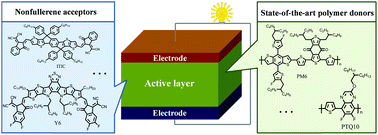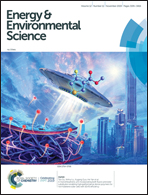High-performance conjugated polymer donor materials for polymer solar cells with narrow-bandgap nonfullerene acceptors
Abstract
In the past few years, the emergence of nonfullerene (n-type organic semiconductor (n-OS)) acceptors combining with the rational design of conjugated polymer donor materials has dominated the rapid development of highly efficient polymer solar cells (PSCs). Relative to the traditional fullerene derivative acceptors, narrow bandgap n-OS acceptors with a fused ring core possess the advantages of strong absorption in the visible-near infrared region and tunable electronic energy levels. On the other hand, the anisotropic conjugated structures of n-OS acceptors make it more challenging to match them with conjugated polymer donors. Therefore, it is critical to rationally design conjugated polymer donors with complementary absorption and matching electronic energy levels with nonfullerene acceptors for realizing high performance PSCs. Here we review the recent development of state-of-the-art wide-bandgap conjugated polymer donor materials, including D–A copolymers with BDT (benzodithiophene) as the D-unit and BDD (1,3-bis(thiophen-2-yl)-5,7-bis(2-ethylhexyl)benzo[1,2-c:4,5-c′]dithiophene-4,8-dione), FBTA (fluorinated benzotriazole) or quinoxaline as the A-unit, etc., for efficient PSCs based on narrow bandgap n-OS acceptors. Our focus is mainly on the design strategies, chemical structure–property relationships, and photovoltaic performance of the polymer donors. We hope that this review article could contribute to better understanding of the design strategies of high-performance conjugated polymer donors for nonfullerene PSCs.



 Please wait while we load your content...
Please wait while we load your content...